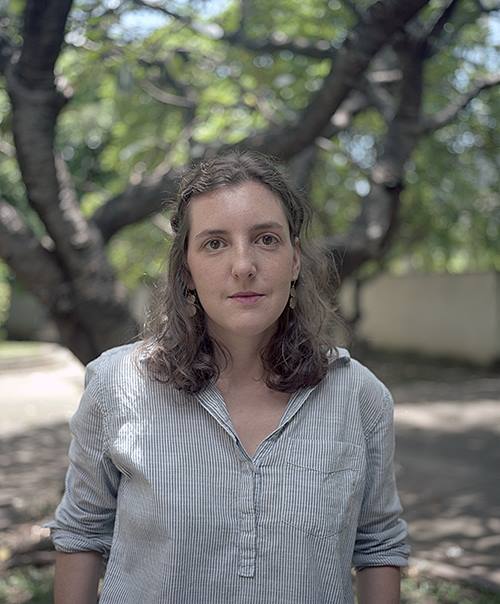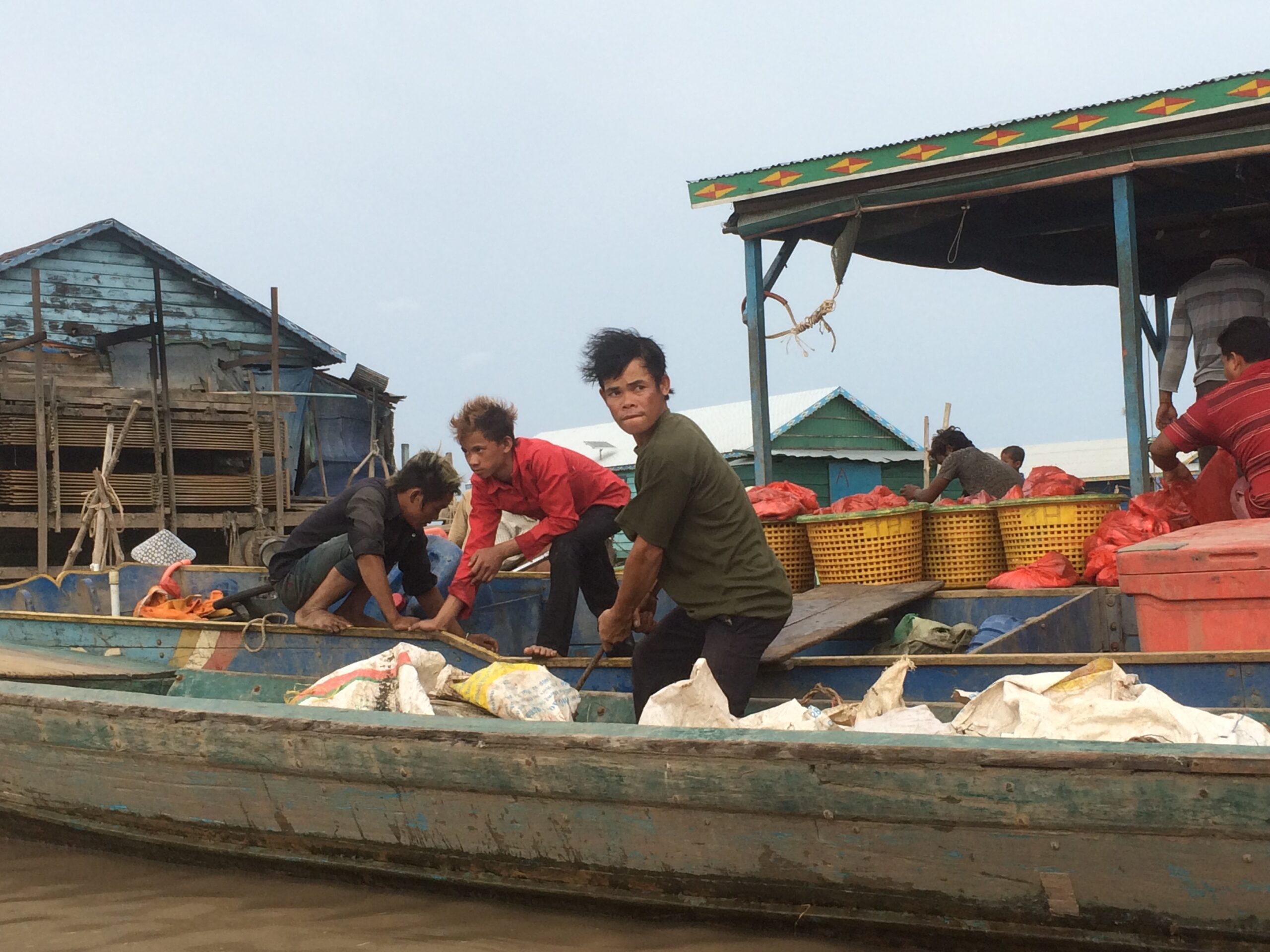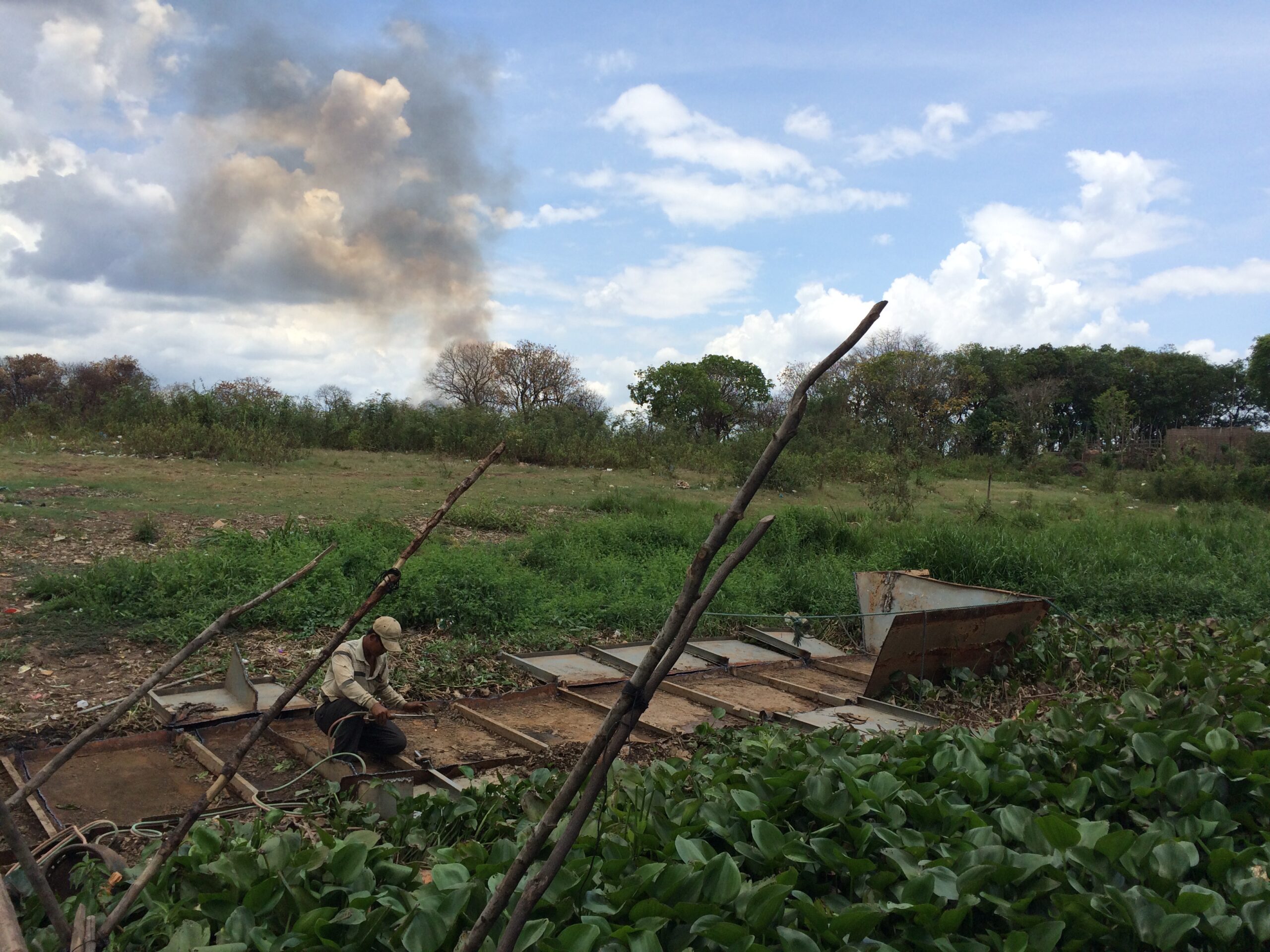The Tonle Sap Lake is the largest freshwater body in Southeast Asia, a massive inland fishery at the core of Cambodia’s culture and economy. During the summer monsoon season, the strength of the Mekong’s surge is so strong that it eventually causes the Tonle Sap river to reverse course at their confluence in Phnom Penh and flow back into the lake. In the fall, the bloated lake changes again, pushing the water down towards Phnom Penh. The regular pulse into and out of Tonle Sap Lake provides fish, floods and livelihoods for millions of Cambodians.
But each year the Mekong has been losing volume, diminishing the Tonle Sap river’s reversal with devastating effects on the Tonle Sap Lake’s ecology and fish population.

In Troubling the Water, a nonfiction book published in March, former Cambodia Daily and Phnom Penh Post reporter Abby Seiff chronicles the multifaceted causes of Tonle Sap Lake’s devastation and its impact on the communities directly affected by these changes. Following another year of drought and record lows for the Mekong river, Southeast Asia Globe spoke with Seiff to understand the causes, consequences and possible solutions for the Tonle Sap’s existential issues.
What makes the Tonle Sap Lake special? What do the lake and river mean for Cambodians and Cambodian culture?
There’s this ecological phenomenon, the only one in the world, in which the lake is fed by the Tonle Sap river, which reverses course twice a year. This double movement makes it a particularly fecund lake. It’s bringing in huge numbers of fish species. It’s bringing in silt, which provides nutrients for the rice paddies all around the floodplains. There’s hundreds of unique species in the Tonle Sap biosphere.
On a more practical level, this is a major fishery giving livelihood, giving food, to millions of people. It’s been doing this for millennia. It’s this reason that the city of Angkor was built near the banks of the Tonle Sap, providing a really critical food and water source.
Then there’s a cultural benefit, which is that a lot of these important cultural touchstones go back to the water and to that waterway. Even the creation myth of Cambodia is similar to that movement of the lake covering the land.
What are the roots of the problems the Tonle Sap Lake is experiencing?
To me, it feels like there are three real major issues. The one that is most known and well-documented is hydropower damming along the Mekong. The Mekong runs from China and then to the Golden Triangle down to Cambodia. China, starting in the 90s, really went on a hydro dam building spree to provide electricity for a very rapidly growing country. Mekong countries did the same thing. Not as many directly on the Mekong, Laos is the only one that’s done that, but plenty on the tributaries.
A dam provides electricity. But it blocks fish migration, it blocks the movement of silt, these critical things that feed the Tonle Sap Lake. And it changes how the water is coming in and out.
The second aspect people are familiar with is climate change. And there’s been a huge number of drought years in recent years, a global problem, but a country like Cambodia is extremely vulnerable to climate change. And so the droughts also keep water levels low, it means there’s less rainfall, it means the Mekong is not filling up as much and it’s not pushing water up to the lake.
And then there’s illegal fishing. Fisheries officials are going around stopping small-scale illegal fishing. You see a lot of people turning to more desperate measures, they’re more likely to do illegal fishing, which is maybe using nets with really small gauges, fishing in protected areas using dynamite or electricity. But there’s also, and this is much harder to find evidence of, really large trawlers in the middle of the lake. These are large scale illegal fishing operations. All of these pressures on the lake are just putting it in a very bad state.

Who lives on and around the Tonle Sap Lake and what has been the value of the lake to these communities?
There’s plenty of people whose families have been there for generations. But I think after 1979 people’s lives were devastated, there wasn’t really a home to go back to. More people were moving to the lake around then. In subsequent decades, a lot more people were moving because if you didn’t have land, if you didn’t have a title, you could just get a houseboat and set up. It’s not as expensive as farming. I suspect this goes hand in hand with all the problems around land titling, and people not having access to adequate land. They saw the lake as this kind of never ending resource.
What is happening to these communities as a result of the ecological changes to the Tonle Sap Lake?
The two main threads that run across almost everyone in any community are migration and debt. People are not fishing as much, they’re going to work as labourers or their children are going to work as migrant workers. You have a whole generation of young people, they want opportunities but most are going because this is really the only chance they have of supporting their family.
I don’t want to be overly rosy about the situation before. Maybe you would have a really bad fishing year, taking out debt. But the next year would be better, and you could repay it. But because we are seeing, year after year, really bad fishing and really bad drought conditions, people aren’t being able to repay their debt. And so there’s a lot more precarity. Everybody is in debt, everybody owes money to microfinance institutions.
When you’re in debt, you’re not getting medical care when you need it, you’re not eating as much, you’re certainly not sending your kids to school. Your life is just getting closer and closer to the edge.
Troubling the Water offers significant space for everyday Cambodian people living on and around the lake to reflect on what they see as the problems and solutions to these issues. What were the common threads among those most directly affected?
When I was talking to people, I was trying to ask, ‘what do you think could be done?’ People said pretty similar things, like they want to see enforcement of fisheries laws.
And they want help from the government, NGOs and charities. A lot of what people want is land, they think if they could go somewhere where there’s farm land, they will have better options. I’m personally not that convinced because I don’t think farmers are doing very well in Cambodia. But there’s this perception that living on the water is precarious and living on land gives you something more. In some ways that’s true, you have access to things on the land that you don’t have on the water: roads and healthcare and schools.
Are the efforts to conserve what remains of the lake’s fish population effective?
If there was a lot more enforcement, it would be [affecting] a lot more really small people because a lot of people are doing things that are considered illegal fishing, they don’t really stand a chance at catching fish otherwise. There’s so few big fish now, you need to use smaller and smaller nets which is this negative feedback loop because you’re catching smaller and smaller fish, including juvenile fish, which means they’re not getting a chance to grow larger.
At the same time, there could be a more concerted effort to go after large scale illegal fishers. Everyone is convinced it’s there, everyone is convinced it’s happening through the collusion of authorities. There’s a reason that these [small-scale] fishers themselves want enforcement, because they are perceiving that there’s actors out there that are getting away with doing large scale illegal fishing. If all that’s happening is a bunch of really poor people are getting their nets taken away, it’s not ideal.
If you want to help the fishers, you need to help them diversify their incomes, you need to give them vocational training. If you can’t give them land, give them ways to earn money that are sustainable, that aren’t just fishing, that will allow them also to be less reliant and that will give them a chance for fisheries to come back.
Fish farming is one solution Cambodia has embraced in response to the loss of Tonle Sap fish populations. Do you see this as a viable way forward?
In Cambodia, the problem is they’re feeding the fish with fingerlings, meaning wild caught juvenile fish, which is depleting the lake supply further. Farmers don’t have to do that. There are other feeds. I think what it shows, though, is that we’re in a state of mitigation and adaptation. The more of that that can be done, the better.
How realistic is transboundary cooperation to protect and restore the Mekong’s water levels when existing institutions tasked with this kind of oversight, such as the Mekong River Commission [MRC] are, as you write, “toothless”?
I think countries are seeing more and more the impacts in their borders, which is making them perhaps more willing to come together.
Cambodia put a hiatus on building mainstream dams. They’re still going ahead with tributary dams. They’ve also seen that because of climate change these [hydropower] dams are not working in an ideal way. At the same time, the cost of solar is really dropping. I think some environmentalists are thinking that in a few years there’s just not going to be incentive to build hydro[power dams].
In terms of transboundary cooperation, I do think there’s hope. The latest MRC report had recommendations and it was really down to China controlling the water and two of their dams [Xiaowan and Nuozhadu]. These two dams have quite large reservoirs, they could coordinate withholding or releasing water based on downstream conditions. I do think, at a certain level, China wants to be a good neighbour and they want to have a good relationship with the region. I could see a situation where China agrees to circumstances where they’re generous with the water flow. Of course, that is a lot of power for one nation.
Hydropower is just one element and if climate change continues, it doesn’t matter, in some ways, what’s happening on the river.

Troubling the Water is available for purchase from Nebraska Press.


